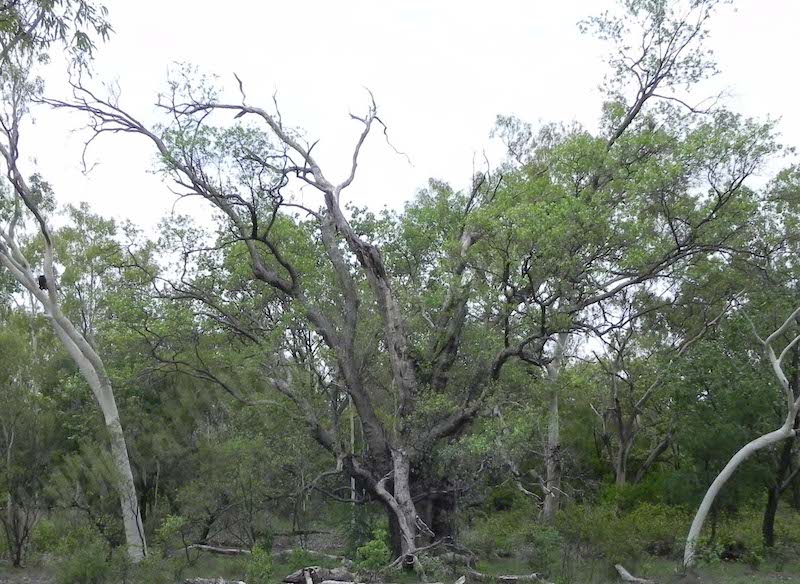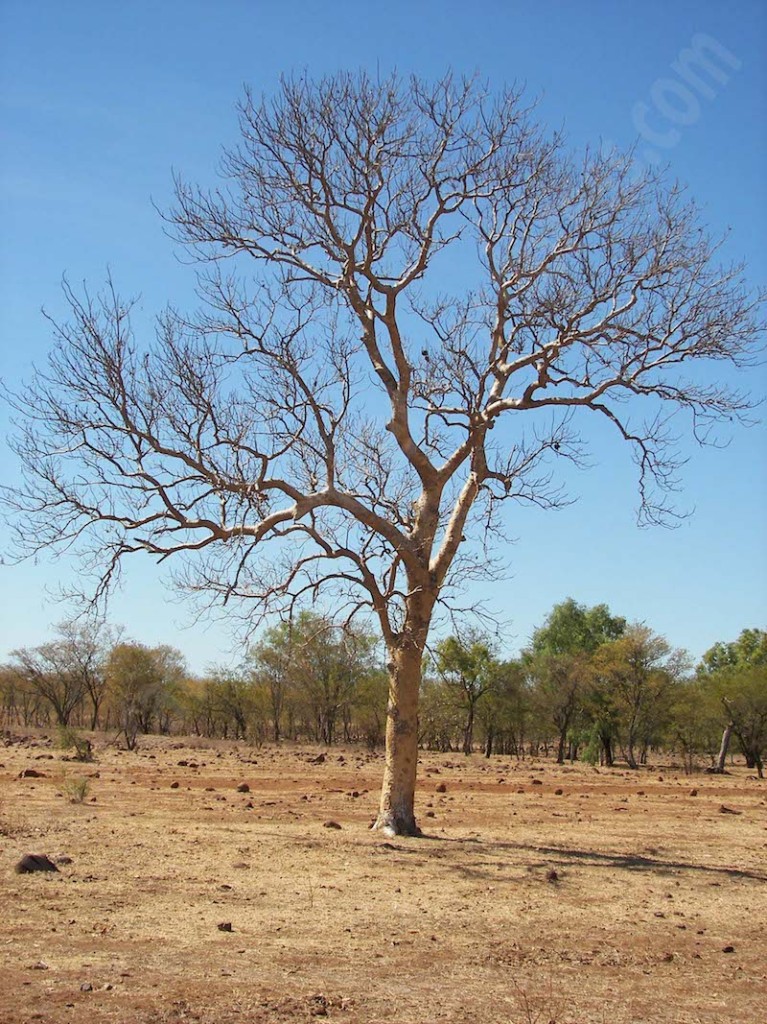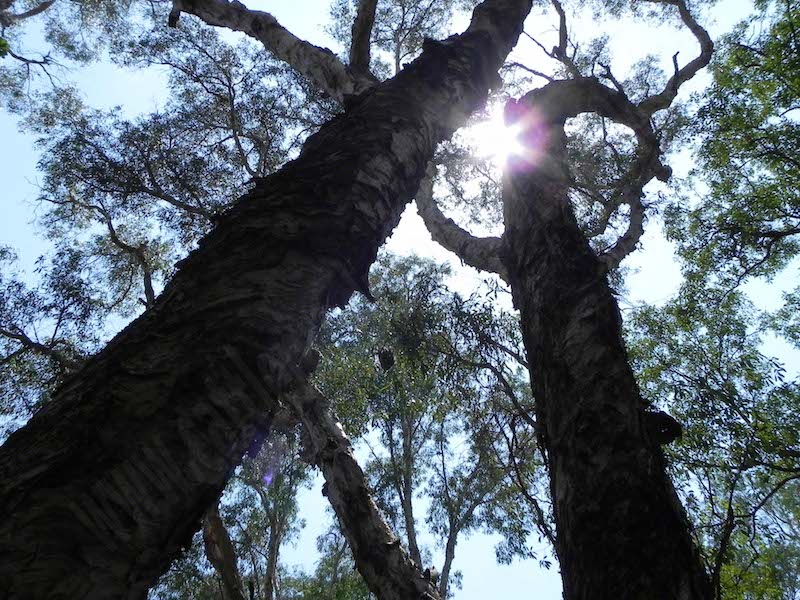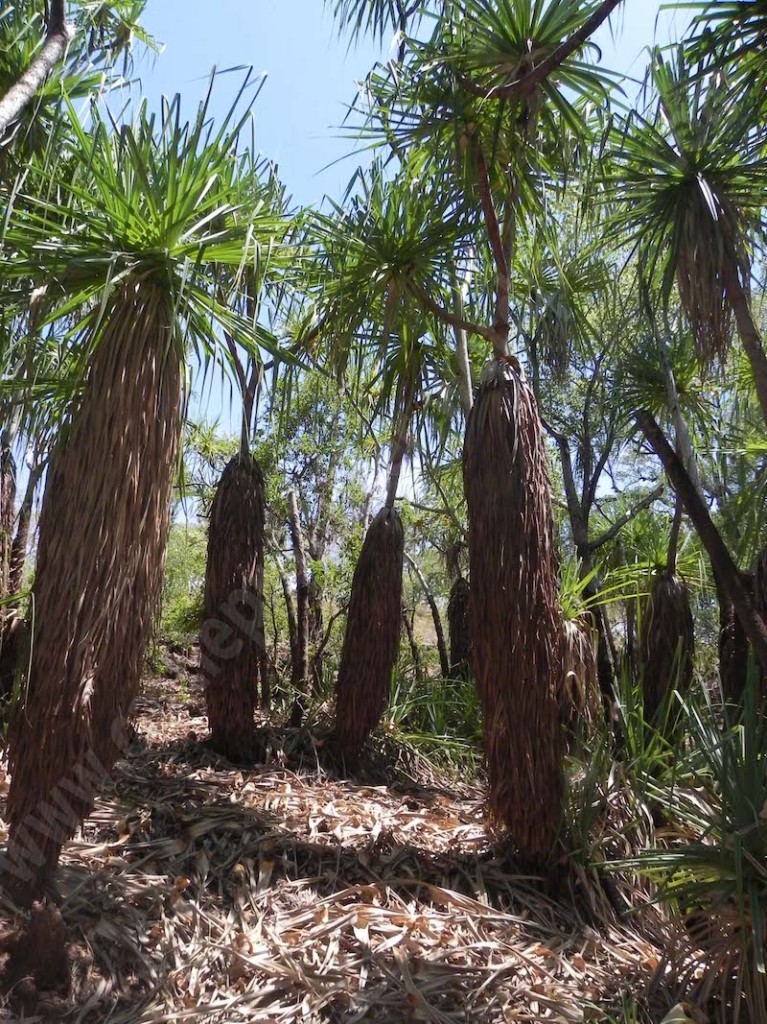Get tough or die
Host: Hodgson River Station
Written by: Jo Bloomfield – Owner, Hodgson River Station.
Has anyone ever told you to stop and smell the roses?- meaning to slow down and take a good look around. Well I prefer to stop and look at the trees. I love to look at the variety of trees, plants, and animals we have on our property.
I love gardening and enjoy growing cultivated fruit trees in a small orchard but I also like to just sit and wonder at trees and imagine what they have seen in their lives.
Now I may have some of these ID names wrong.
If only this tree in the centre of picture could talk, its base is at least 2m in diameter, but has died back extensively, it still has live branches but is obviously very old and near the end of it’s life. Located on the edge of a creek and open area this place is notoriously difficult for mustering cattle. It would have seen some seriously wild helicopter escapades in its time trying to get cattle out of the scrub and some fairly interesting encounters of people on bikes and horses pitted against cranky cattle. During the wet, floods go through this area and would have been very big to reach this tree but would have done over the years. About the only thing really holding it up now is the termite mound through its centre. Each wet season I think it’s got to topple with some of our storms, but so far it has managed to stay upright.
This photo was taken in the late dry around November. A Cottonwood, these trees are strikingly beautiful in the dry when they loose their leaves as they are during the wet when they have very dark green leaf growth. Often growing in inhospitable rocky sites.
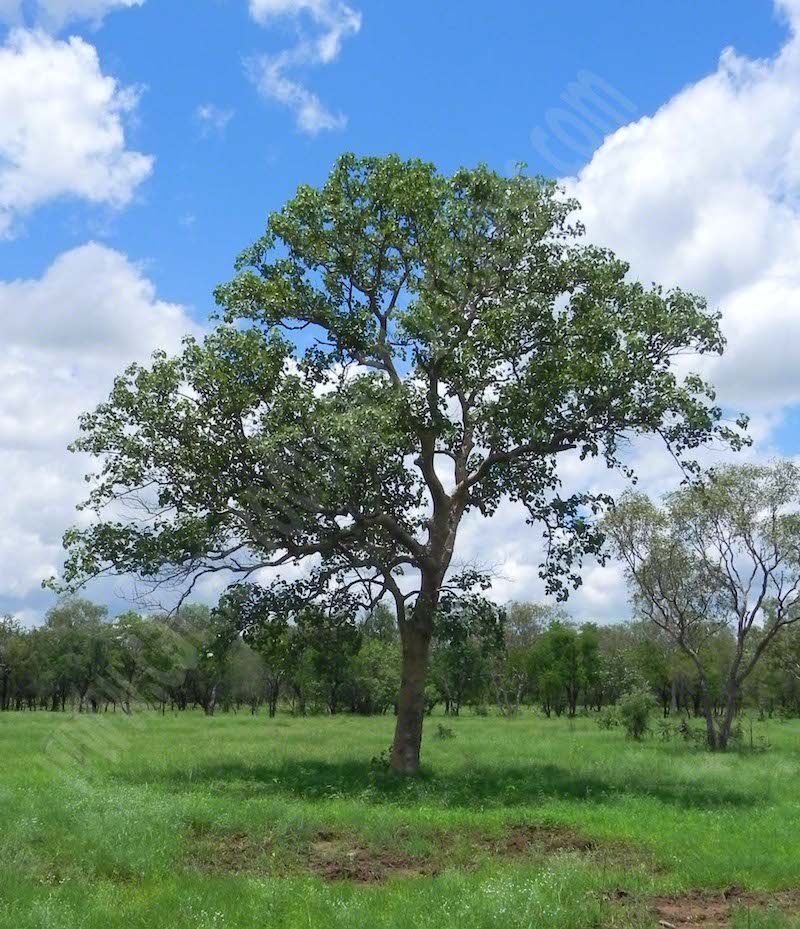 Cottonwood in the wet season. Photo taken mid Wet. February. Same tree as in the previous photo.
Cottonwood in the wet season. Photo taken mid Wet. February. Same tree as in the previous photo.
The Paperbarks, a Melaleuca. Towering trees in the right area, which is mainly near permanent waters. According to my books a very versatile tree for use by aboriginies as the the bark could be peeled and used a variety of ways to carry items, make shelters, even used to wrap around corpses for burial. Flowers could be used to treat coughs and colds. The wood apparently never rots and is very strong so useful for tools or in pastoral times wood posts.
These palms always remind me of the Dr Seuss book, the Lorax. A story about the environment and how removal of the trees ruined it. These palms look like the trees illustrated in those books. Where these grow is always permanent water or very shallow water. They bear a large fruit which is meant to be edible, but I’ve never been able to reach one to try. They have long leaves which have a sharp serration along the sides which can be very nasty if you grab them with your hands or brush up against them. While green the palms fronds are quiet malleable and can be torn into long strips, I would think in deft hands could be woven into goods that the aboriginals used to carry things.
The pasture and grazing plants. In this picture is mainly dried Bunched spear grass and lower to the ground is various species of Rat tail grasses (I think!). In the photo, taken late in the dry neither would have much nutritional value but would give the animals some bulk to eat. The benefit of some of these unpalatable varieties is they act as very good soil erosion control when it does rain. This area is a large black soil flat which after rains is a favourite area of cattle to graze. Through grazing management, use of fire and planning of where watering points are located for stock the natural diversity of an area can be maintained. Use of fire to control some dominant species of plants is also used to control some plants growth and encourages others.
In many instances people say cattle are damaging to the environment.
In a perfect world where money grows on trees it would be ideal to not have any introduced species in an environment, but as it’s not an ideal world and I would argue that cattle in this area, that is suited to grazing actually improve the environment. They have bought a commercial value and therefore give the land commercial value, they provide incentive to make the land long term environmentally sustainable. As pastoralists we receive very little to no help through government funding for feral animal control, weed management, or pest control of animals or plants. The government simply do not have the funds to support these programs and while the pastoralists don’t have the funds to a great extent either, at least by being present we will make some effort to control some of the environmental issues now arising. Without us and without enabling us to produce an income from the land there would be no environmental management what so ever in many parts of north Australia.
People often say to me well diversify, do tourism, I’ve actually looked into that and the biggest factor being I’m not a people person. I don’t believe tourism would work on a commercial scale here simply because the general population who are prepared to travel to very remote areas actually want to do it very cheaply. Many of these sites I have photographed in this weeks blog would actually be damaged if traffic by vehicles and people were encouraged in numbers to visit them.
Mining I would say is the greatest threat to biodiversity in this region, once some of these areas are fundamentally changed then they are irreversibly damaged for good.
Articles for this week will be:
1-Wild Wild Rivers – Explanation of site and formation of river systems.
2-Roller Coaster Seasons – Variances of the wet to the dry season in North Australia (today).
3-Strut your Stuff, The Animals – Native animals of the region.
4-Get tough or die, The Plants – Native plants of the region.
5-The Weird the wacky the wonderful – Oddities and incredible feats of nature.
6-The unwanted, often despised – The feral animals and weeds.
7-Monitoring sites – How producers can pro-actively record and assess their activities.

